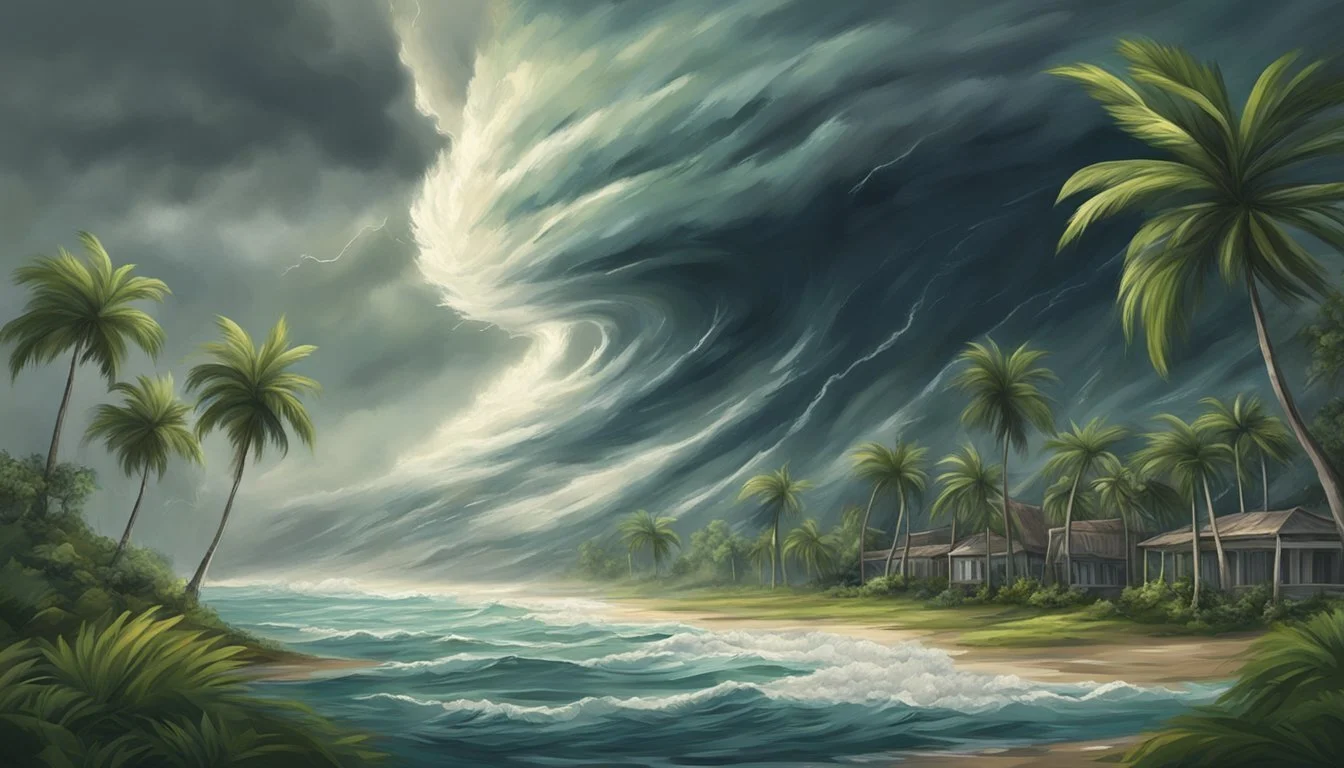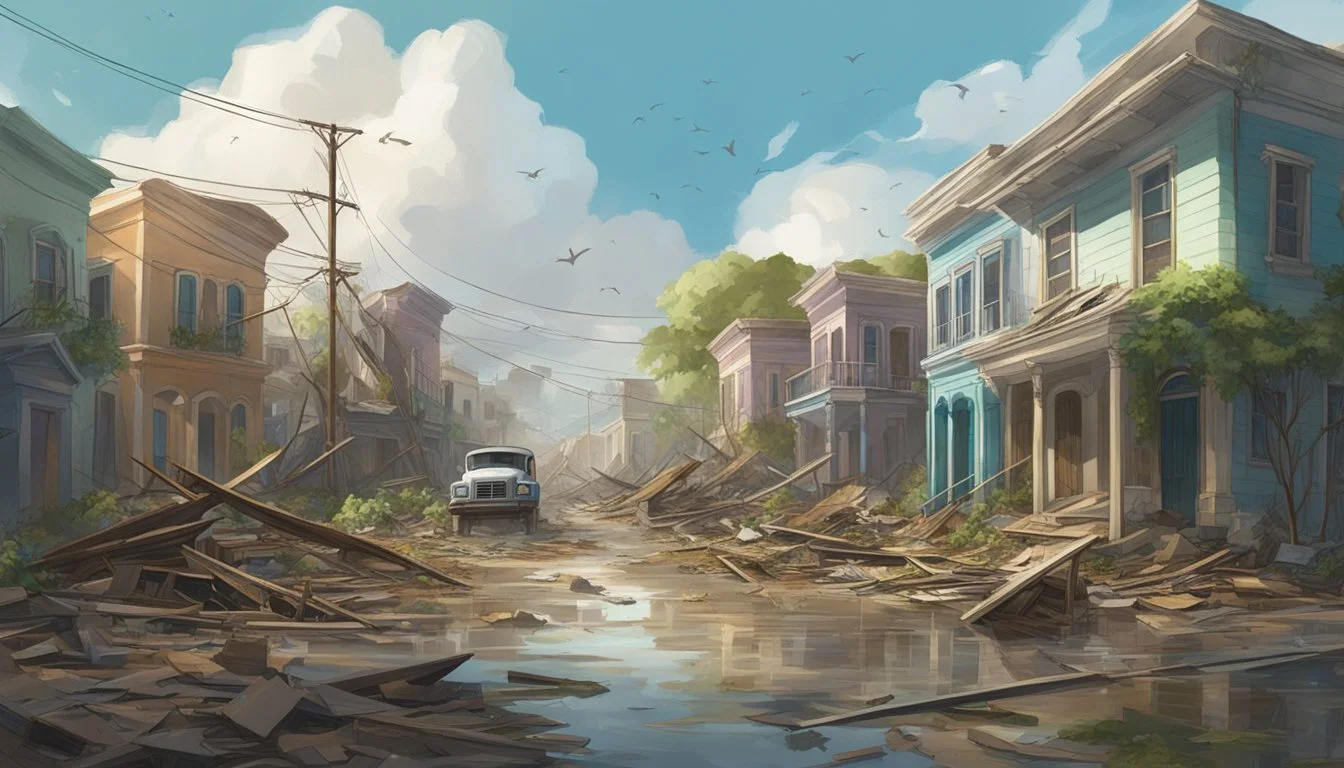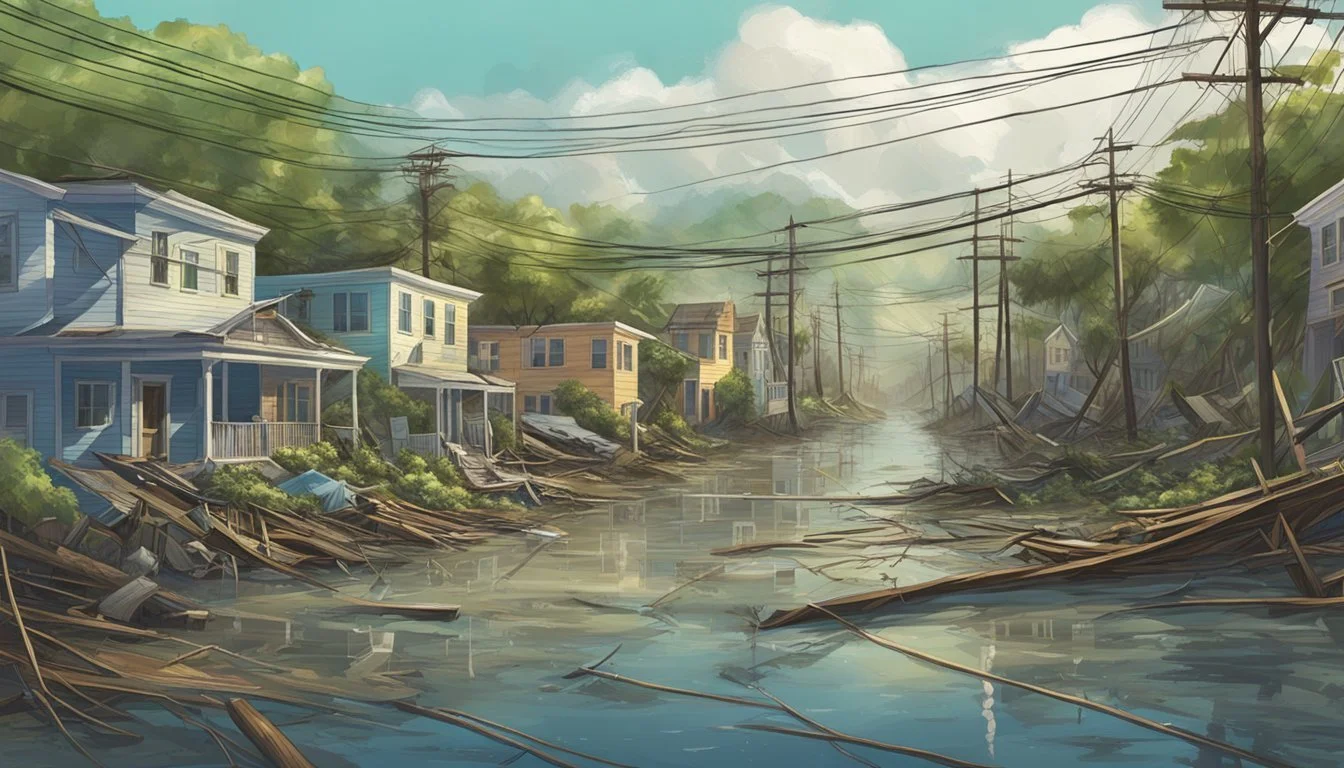5 Powerful Documentaries That Capture 2017's Hurricane Maria Devastation
Unforgettable Portraits of Resilience and Recovery
Hurricane Maria unleashed its fury on Puerto Rico and the Virgin Islands in September 2017, leaving a trail of destruction in its wake. The Category 5 storm's impact was so severe that it reshaped the landscape and lives of millions. Powerful documentaries have emerged to capture the devastation and resilience of those affected by this historic natural disaster.
These films provide an unflinching look at the hurricane's aftermath, chronicling the struggles of communities as they grappled with widespread power outages, food and water shortages, and a painfully slow recovery process. From personal stories of survival to broader examinations of the disaster response, these documentaries offer viewers a deeper understanding of Hurricane Maria's far-reaching consequences.
Through intimate footage and compelling narratives, the documentaries showcase both the immediate chaos following the storm and the long-term challenges faced by Puerto Rico and the Virgin Islands. They serve as vital records of a catastrophic event that continues to impact the region years after the winds subsided.
Origins and Nature of Hurricane Maria
Hurricane Maria developed rapidly from a tropical wave into one of the most destructive Atlantic hurricanes on record. It reached Category 5 strength before making catastrophic landfall on Puerto Rico as a high-end Category 4 storm.
Formation and Intensification
Hurricane Maria originated from a tropical wave that emerged off the west coast of Africa on September 12, 2017. The system organized quickly, becoming a tropical depression on September 16. Within 24 hours, it strengthened into a tropical storm.
Maria underwent explosive intensification on September 18, transforming from a Category 1 to a Category 5 hurricane in just 15 hours. This rapid strengthening was fueled by warm ocean temperatures and low wind shear.
The storm reached its peak intensity on September 20 with maximum sustained winds of 175 mph and a minimum central pressure of 908 millibars.
Category 4 Storm Classification
When Hurricane Maria made landfall in Puerto Rico, it had weakened slightly to a Category 4 storm. The National Hurricane Center reported sustained winds of 155 mph at landfall, just 2 mph shy of Category 5 status.
Category 4 hurricanes are characterized by:
Sustained winds of 130-156 mph
Catastrophic damage to buildings and infrastructure
Near-total power loss for weeks or months
Long-term water shortages
Maria maintained Category 4 intensity for an unusually long time, contributing to its devastating impact.
Trajectory and Landfall
Hurricane Maria followed a path similar to Hurricane Irma, which had struck the Caribbean just two weeks earlier. Key points in Maria's trajectory:
September 18: Intensified to a hurricane near the Lesser Antilles
September 19: Made landfall on Dominica as a Category 5
September 20: Struck Puerto Rico as a high-end Category 4
September 22: Passed north of Hispaniola, weakening to Category 3
September 28: Became extratropical northeast of the Bahamas
Maria's eye crossed Puerto Rico from southeast to northwest, subjecting nearly the entire island to its powerful eyewall. The storm's slow forward speed prolonged the exposure to extreme winds and torrential rainfall.
Impact on Puerto Rico and Virgin Islands
Hurricane Maria devastated Puerto Rico and the U.S. Virgin Islands in September 2017, causing widespread destruction and a humanitarian crisis. The storm's powerful winds and flooding crippled critical infrastructure and left millions without basic necessities for months.
Infrastructure and Power Grid Destruction
Maria's 155 mph winds toppled power lines and destroyed 80% of Puerto Rico's electrical grid. Nearly all 3.4 million residents lost power, with some areas remaining without electricity for almost a year.
The storm damaged or destroyed 400,000 homes on the island. Roads and bridges crumbled, isolating many communities. Cellular networks went down, hampering communication and rescue efforts.
In the Virgin Islands, Maria compounded damage from Hurricane Irma just weeks prior. The back-to-back storms decimated structures and knocked out power to nearly all residents.
Humanitarian Crisis and Flooding
Maria's torrential rains - up to 37 inches in some areas - triggered widespread flooding and mudslides. Thousands of Puerto Ricans were displaced, with many living in shelters for months.
Clean water became scarce as treatment plants lost power. Food shortages emerged as farms were wiped out and supply chains disrupted. Hospitals struggled to care for patients without electricity and medicine.
The official death toll eventually reached 2,975 in Puerto Rico, making Maria one of the deadliest U.S. natural disasters in over a century.
Guajataca Dam and Flash Flood Warnings
The Guajataca Dam in northwest Puerto Rico suffered critical damage during the hurricane. Authorities issued urgent evacuation orders for 70,000 nearby residents as the dam was at risk of failing.
Flash flood warnings remained in effect for days as the compromised dam continued to leak. Engineers worked to channel water away from populated areas and prevent catastrophic flooding.
While the dam held, the incident highlighted Puerto Rico's aging infrastructure and vulnerability to extreme weather events.
Casualties and Aftermath
Hurricane Maria's impact on Puerto Rico was catastrophic, causing widespread destruction and loss of life. The storm's effects continued to be felt long after it made landfall.
Death Toll and Fatalities
The official death toll from Hurricane Maria was initially reported as 64. However, subsequent studies revealed a much higher number of fatalities. A Harvard University study estimated 4,645 excess deaths between September 20 and December 31, 2017.
In August 2018, the Puerto Rican government revised the official death toll to 2,975. This figure was based on a study conducted by George Washington University.
The storm's direct impacts, including storm surge and high winds, caused many immediate deaths. Indirect fatalities occurred due to interrupted medical care and lack of basic necessities in the following months.
Short-Term and Long-Term Consequences
Hurricane Maria devastated Puerto Rico's infrastructure. The entire island lost electricity, with some areas remaining without power for months. Clean water access became a critical issue, forcing many to rely on contaminated sources.
The healthcare system faced severe challenges. Many hospitals operated on generators, struggling to provide care. Medication shortages and damaged medical equipment further strained services.
Long-term economic impacts were significant. Thousands of businesses closed, and unemployment rose sharply. Agricultural losses were estimated at $780 million.
The disaster sparked a mass exodus, with over 130,000 people leaving Puerto Rico in the six months following Maria. This population decline further complicated recovery efforts.
Response and Relief Efforts
The aftermath of Hurricane Maria prompted a complex array of response and relief efforts. Local and federal governments mobilized resources, while international aid organizations provided crucial support to Puerto Rico.
Local and Federal Government Action
President Donald Trump visited Puerto Rico on October 3, 2017, to assess the damage. The Trump Administration faced criticism for its initial response speed. FEMA deployed over 10,000 federal personnel to the island for rescue and recovery operations.
The National Hurricane Center provided critical forecasts and warnings throughout the crisis. Governor Ricardo Rosselló coordinated with federal agencies to distribute aid and restore infrastructure.
The USNS Comfort, a naval hospital ship, arrived in Puerto Rico on October 3 to provide medical assistance. It treated over 1,800 patients during its deployment.
International Aid and Relief Effort
Numerous countries and organizations contributed to Puerto Rico's recovery. The United Nations provided $9.5 million in aid for immediate relief efforts.
The Red Cross mobilized volunteers and resources, distributing over 1 million relief items. Oxfam intervened directly, citing concerns about the federal response's adequacy.
Private companies also played a role. Tesla sent Powerwall battery systems to restore electricity in critical areas. Celebrity fundraising efforts, like Lin-Manuel Miranda's "Almost Like Praying," raised millions for relief.
H2: Response and Relief Efforts
The aftermath of Hurricane Maria prompted a complex array of response and relief efforts. Local and federal governments mobilized resources, while international aid organizations provided crucial support to Puerto Rico.
H3: Local and Federal Government Action
President Donald Trump visited Puerto Rico on October 3, 2017, to assess the damage. The Trump Administration faced criticism for its initial response speed. FEMA deployed over 10,000 federal personnel to the island for rescue and recovery operations.
The National Hurricane Center provided critical forecasts and warnings throughout the crisis. Governor Ricardo Rosselló coordinated with federal agencies to distribute aid and restore infrastructure.
The USNS Comfort, a naval hospital ship, arrived in Puerto Rico on October 3 to provide medical assistance. It treated over 1,800 patients during its deployment.
H3: International Aid and Relief Effort
Numerous countries and organizations contributed to Puerto Rico's recovery. The United Nations provided $9.5 million in aid for immediate relief efforts.
The Red Cross mobilized volunteers and resources, distributing over 1 million relief items. Oxfam intervened directly, citing concerns about the federal response's adequacy.
Private companies also played a role. Tesla sent Powerwall battery systems to restore electricity in critical areas. Celebrity fundraising efforts, like Lin-Manuel Miranda's "Almost Like Praying," raised millions for relief.
Social and Economic Repercussions
Hurricane Maria exposed and exacerbated long-standing economic challenges in Puerto Rico. The storm's destruction left the island facing a daunting recovery process and reliant on federal assistance.
Puerto Rico's Financial Crisis
Puerto Rico's economy was already struggling before Maria hit. The island carried over $70 billion in public debt and had filed for bankruptcy-like protection in May 2017. Maria compounded these issues.
Widespread power outages crippled businesses. Many were forced to close permanently, leading to job losses. Tourism, a key industry, plummeted as hotels and attractions were damaged.
The exodus of residents to the mainland U.S. accelerated. Over 130,000 people left in the year after Maria, further shrinking the tax base. This brain drain included many skilled workers needed for recovery efforts.
Reconstruction and Federal Assistance
Congress approved $20 billion in Housing and Urban Development funding for Puerto Rico's recovery. The Federal Emergency Management Agency also provided billions in aid.
However, the rollout of assistance was slow and uneven. Red tape and allegations of mismanagement hampered efforts. Many residents waited months for basic necessities like tarps for damaged roofs.
The power grid's restoration took nearly a year. This prolonged outage severely impacted healthcare, education, and economic activity. Small businesses struggled to survive without electricity.
Federal funds did eventually spur some economic growth through reconstruction projects. But debates continued over the adequacy and oversight of aid programs.
Environmental Implications
Hurricane Maria inflicted severe damage on Puerto Rico's natural ecosystems and agricultural lands. The storm's intense winds and flooding reshaped landscapes, destroyed habitats, and disrupted fragile ecological balances across the island.
Natural Ecosystem Damage
Maria's powerful winds uprooted millions of trees, stripping forests bare and leaving once-lush areas barren. Landslides triggered by heavy rains reshaped mountainsides and buried valleys. Coastal ecosystems suffered extensive damage from storm surge and erosion. Coral reefs experienced significant destruction, with some areas losing up to 25% of their coral cover. Mangrove forests, crucial for shoreline protection, were heavily impacted.
The loss of vegetation and habitat disrupted food chains and breeding grounds for numerous species. Many birds, reptiles, and small mammals perished in the storm or struggled to survive in its aftermath. Waterways became clogged with debris and sediment, affecting aquatic life and water quality.
Agriculture and Vegetation Loss
Maria devastated Puerto Rico's agricultural sector. The storm destroyed an estimated 80% of the island's crop value. Coffee plantations, a significant part of Puerto Rico's economy, suffered near-total losses. Banana and plantain crops were wiped out. Many fruit trees were uprooted or severely damaged.
The destruction of crops and agricultural infrastructure led to food shortages and economic hardship for farmers. Recovery efforts faced challenges due to contaminated soils and damaged irrigation systems. Reforestation initiatives began to address the massive loss of trees, but full recovery of agricultural lands and forests will take years, if not decades.
Invasive species gained footholds in areas where native vegetation was destroyed, potentially altering ecosystems long-term. The environmental impacts of Hurricane Maria continue to shape Puerto Rico's landscape and biodiversity.
Documentary Analysis and Storytelling Techniques
Documentaries about Hurricane Maria employ specific techniques to convey the disaster's impact. These methods shape the narrative and visual representation of the storm's destruction and aftermath.
Narrative-building in Disaster Documentaries
Documentarians craft compelling stories by weaving personal accounts with factual information. They often use a chronological structure, starting with the storm's approach and intensification. Interviews with survivors, officials, and experts provide diverse perspectives on the hurricane's effects.
Filmmakers highlight the sustained winds of up to 155 mph and gusts exceeding 175 mph to illustrate Maria's power. They may incorporate weather maps and satellite imagery to show the storm's path and size.
Voice-over narration helps connect different elements of the story and provide context. Some documentaries use on-screen text to display key statistics or timelines.
Visual Representation of Destruction and Recovery
Aerial footage showcases the widespread devastation across Puerto Rico. Filmmakers often juxtapose before-and-after shots to emphasize the storm's impact on landscapes and infrastructure.
Close-up shots of damaged homes, flooded streets, and uprooted trees convey the personal toll. Documentaries frequently depict the water crisis, showing long lines at distribution centers and people collecting rainwater.
Time-lapse sequences can illustrate the slow process of rebuilding. Interviews with residents repairing their homes or communities working together highlight resilience and recovery efforts.
Documentarians may use color grading to enhance mood, with muted tones for destruction scenes and brighter colors for recovery segments.
Looking Forward
Puerto Rico's recovery from Hurricane Maria continues, with efforts focused on rebuilding infrastructure and improving disaster preparedness. Communities are working to strengthen resilience while implementing measures to mitigate future hurricane impacts.
The Road to Resilience
Puerto Rico has made strides in rebuilding its power grid and infrastructure since Hurricane Maria. The island has invested in renewable energy sources, including solar panels and microgrids, to create a more robust electrical system. Community organizations have formed to support local recovery efforts and advocate for needed resources.
FEMA has provided over $30 billion in federal disaster assistance to Puerto Rico. These funds have gone toward repairing homes, roads, and public facilities. The agency has also helped implement building codes to make structures more hurricane-resistant.
Preventative Measures for Future Disasters
Puerto Rico has updated its hurricane preparedness plans based on lessons from Maria. The island now maintains larger stockpiles of emergency supplies and has improved its early warning systems. NOAA has upgraded weather forecasting technology to provide more accurate hurricane predictions.
New shelters have been built to higher standards, with increased capacity and backup power systems. Puerto Rico has also focused on natural disaster mitigation through reforestation efforts and coral reef restoration to reduce coastal erosion.
The government has implemented stricter building codes and zoning laws to limit construction in flood-prone areas. Public education campaigns now emphasize the importance of having an emergency plan and supplies ready before hurricane season.




